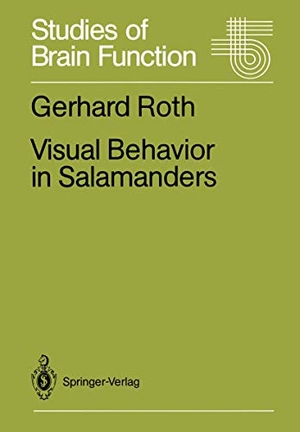Für statistische Zwecke und um bestmögliche Funktionalität zu bieten, speichert diese Website Cookies auf Ihrem Gerät. Das Speichern von Cookies kann in den Browser-Einstellungen deaktiviert werden. Wenn Sie die Website weiter nutzen, stimmen Sie der Verwendung von Cookies zu.
Cookie akzeptieren
Gerhard Roth
Visual Behavior in Salamanders
- Springer Berlin Heidelberg
- 2011
- Taschenbuch
- 316 Seiten
- ISBN 9783642727153
Salamanders are subject to misconceptions even among vertebrate zoologists and physiologists. They are often said to exist only in northern temperate zones, being bound to aquatic or very moist cool habitats. In reality, more than half of all salamander species live in subtropical and tropical zones, ex clusively in the New World. Again, more than half of the salamand~r species have become totally independent of aquatic habitats following the loss of a free larval stage. Many of the subtropical and tropical salamanders have become adapted to rather high temperatures up to 26-28 DC. The brain and the sensory systems of salamanders are often considered to be
Mehr
Weniger
zzgl. Versand
in Kürze